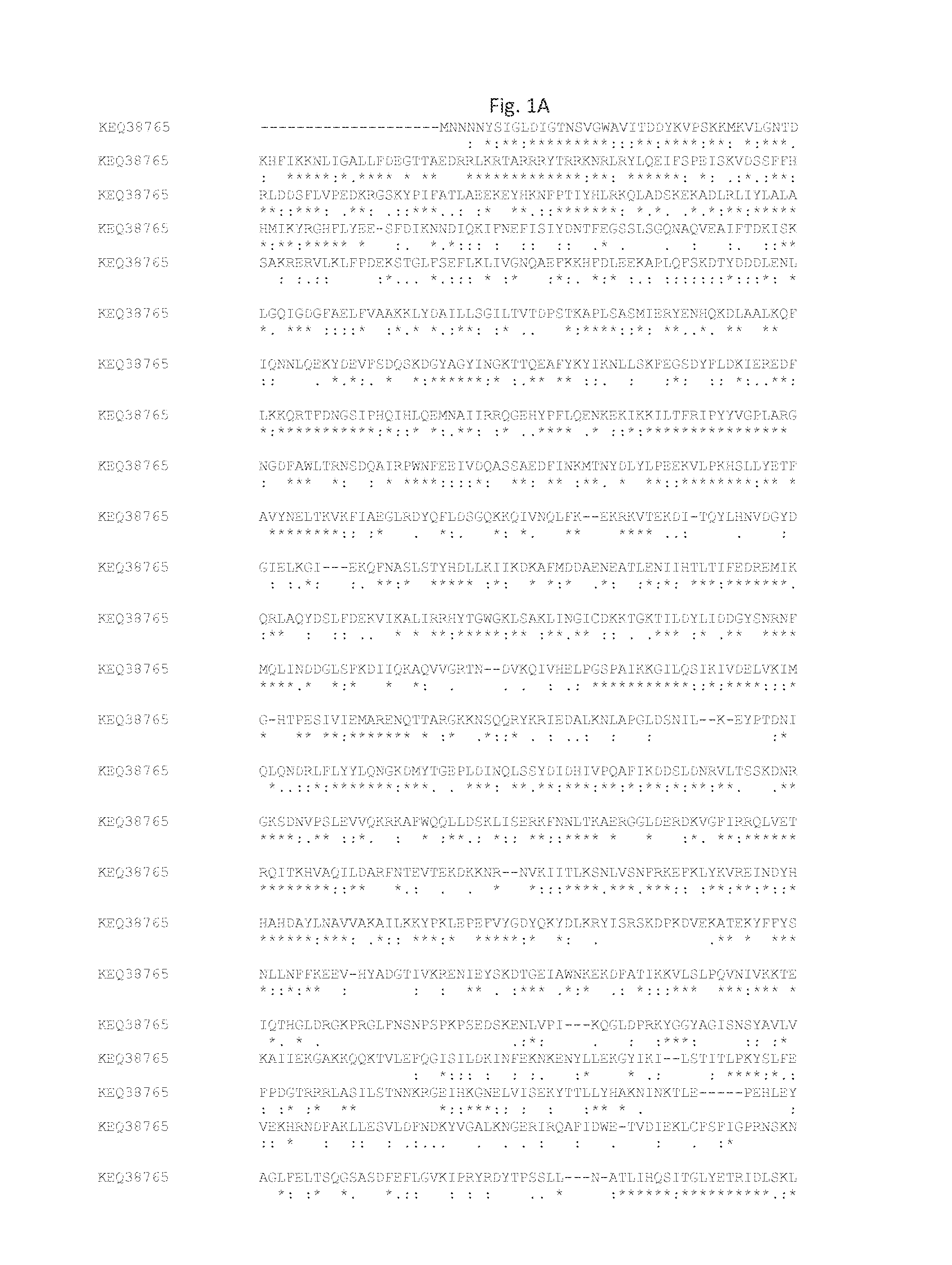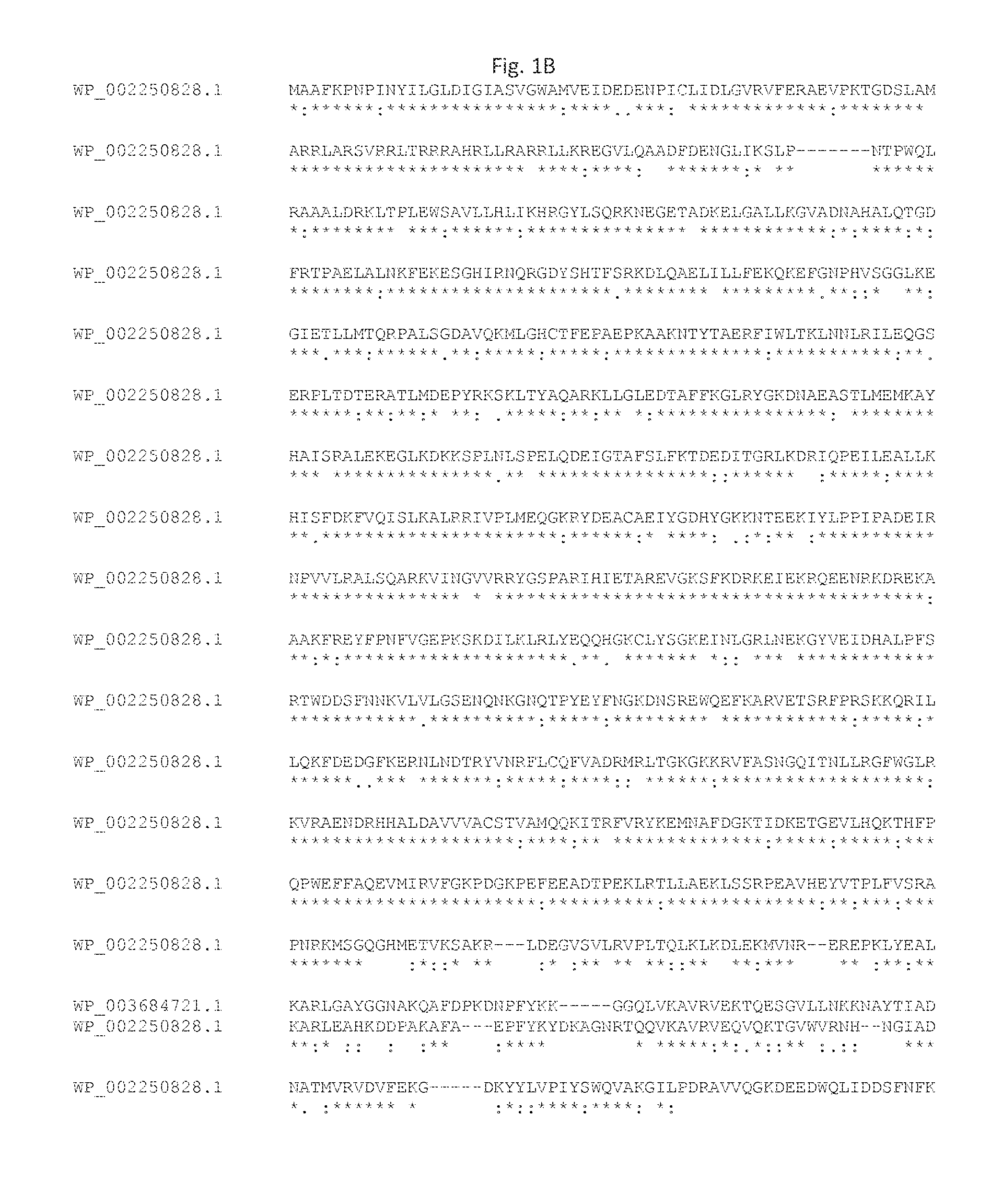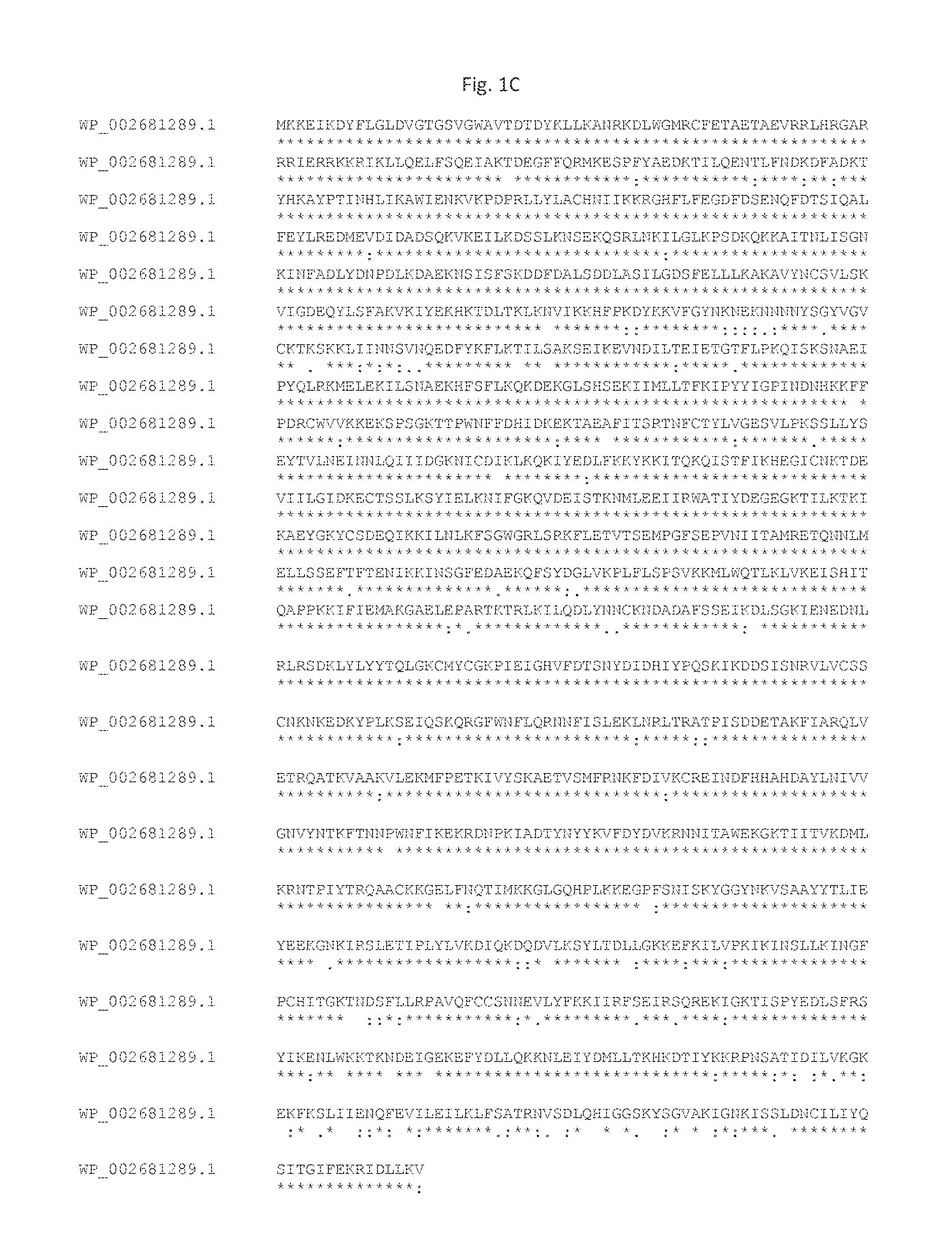Method for increasing plant yields
a technology of plant yield and methylation, applied in the field of plant yield increase, can solve the problems of methylation of plant sulfate, achieve the effects of improving useful traits, increasing yield and/or tolerance, and improving useful dna methylation
- Summary
- Abstract
- Description
- Claims
- Application Information
AI Technical Summary
Benefits of technology
Problems solved by technology
Method used
Image
Examples
example 1
SgRNA for CRISPR / CAS9 proteins
[0144]SgRNA for Streptococcus pyogene. A sgRNA suitable for targeting a S. pyogenes CRISPR / CAS9 protein to DNA target sites in the genome has the following design: a 17 to 20 nucleotide base-pairing region that is complementary or homologous to the target I)NA sequence, a 42 nt Cas9 recognition hairpin structure, and a 40 nt S. pyogenes terminator including a 3′ hairpin followed by poly U nt tail of 4 or more U nt) and has the general sequence shown in SEQ ID NO:1, wherein T is transcribed as U in the sgRNA., and the N20 (actually a range of N17 to N20) is the sequence of the intended target DNA. The intended target DNA sequence needs to contain a PAM sequence of NGG such that the target I)NA sequence of the genomic DNA is 5′-N20-NGG-3′. Shorter 17 to 19 nt regions of homology in the sgRNAs can be used for increased specificity (Fu, Sander et al. 2014). A related optimized sgRNA is available for Streptococcus thermophiles CRISPR / CAS9 systems (SEQ ID NO:...
example 2
RNA Pol III Promoters for sgRNA transcription in plants
[0146]As used herein, “a Pol III promoter” is a promoter which directs transcription of the operably attached DNA region through transcription by RNA polymerase III. These include genes encoding 5S RNA, tRNA, 7SL RNA, U6 snRNA and a few other small stable RNAs, many involved in RNA processing. Most of the promoters used by Pol III require sequence elements downstream of +1, within the transcribed region. A minority of pol III templates however, lack any requirement for intragenic promoter elements. These are referred to as type 3 promoters. In other words, “type 3 Pol III promoters” are those promoters which are recognized by RNA polymerase III and contain all cis-acting elements, interacting with the RNA polymerase III upstream of the region normally transcribed by RNA polymerase III. Such type 3 Pol III promoters can thus easily be combined in a chimeric gene with a heterologous region, the transcription of which is desired, s...
example 3
CRISPR CAS9 Proteins as DNA Binding Proteins
[0155]CRISPR / CAS9 proteins that bind guide RNA.(s) for RNA-guided DNA binding and endonuclease activity are widely distributed in bacterial species. In the three Streptococcus, Neisseria. Treponema genera demonstrated to provide CRISPR″CAS9 gene targeting in eukaryotes, many individual CRISPR / CAS9 protein sequences are known within each genus and display conserved protein sequences as indicated in clustal omega alignments for: Streptococcus, Neisseria, and Treponema species (FIG. 1). The RuvC-like domain and HNH-motif catalytic domains are highly conserved, particularly the D10 and H841 amino acid positions (FIG. 2). Mutation of D10A and H841A of Streptococcus pyogenes CRISPR / CAS9 produces a protein capable of RNA-guided DNA binding but lacking DNA endonuclease activity (Jinek, Chylinski et al. 2012). Alignment of Streptococcus, Neisseria, Treponema CRISPR / CAS9 proteins near the N-terminal RuvC-like domain and HNH-motif domain indicate the...
PUM
| Property | Measurement | Unit |
|---|---|---|
| Fraction | aaaaa | aaaaa |
| Fraction | aaaaa | aaaaa |
| Catalyst | aaaaa | aaaaa |
Abstract
Description
Claims
Application Information
 Login to View More
Login to View More - R&D
- Intellectual Property
- Life Sciences
- Materials
- Tech Scout
- Unparalleled Data Quality
- Higher Quality Content
- 60% Fewer Hallucinations
Browse by: Latest US Patents, China's latest patents, Technical Efficacy Thesaurus, Application Domain, Technology Topic, Popular Technical Reports.
© 2025 PatSnap. All rights reserved.Legal|Privacy policy|Modern Slavery Act Transparency Statement|Sitemap|About US| Contact US: help@patsnap.com



